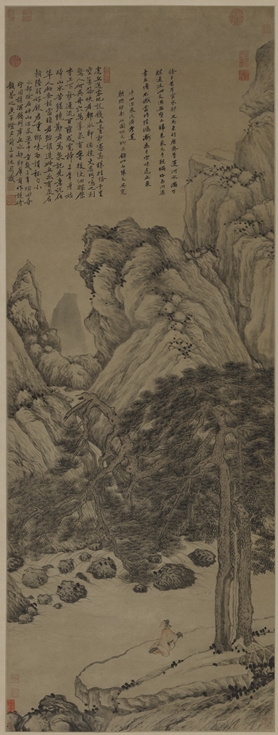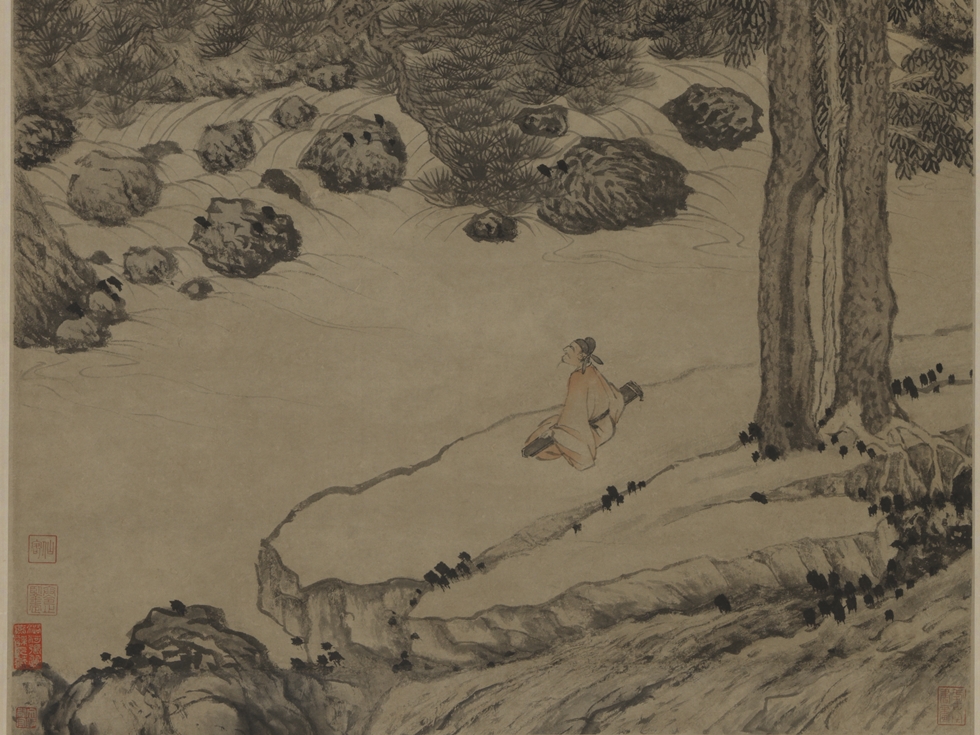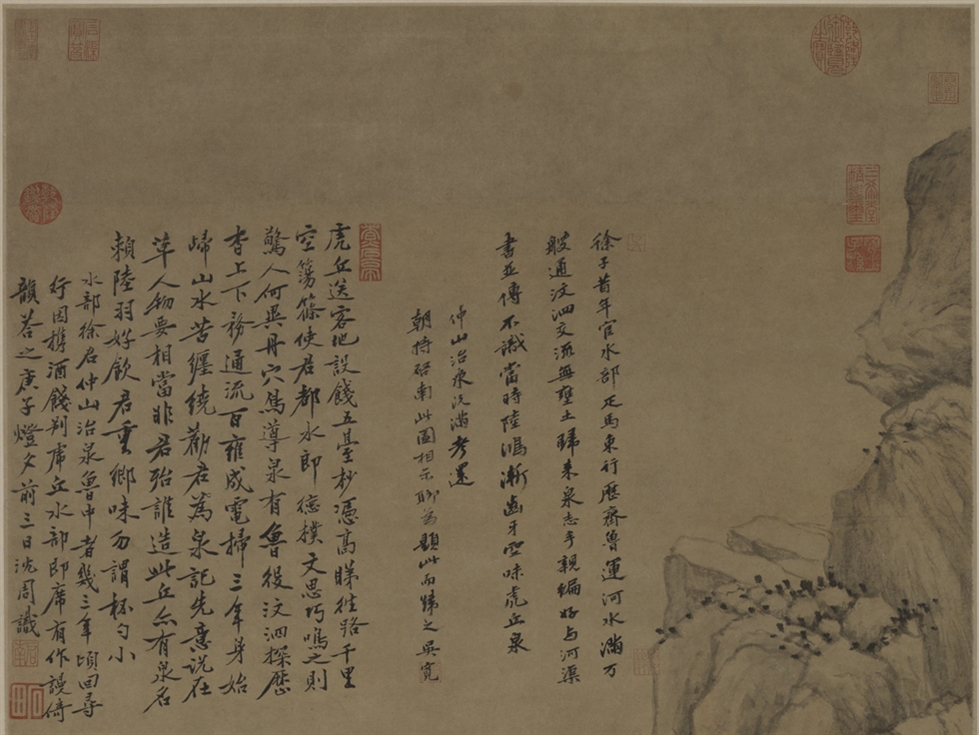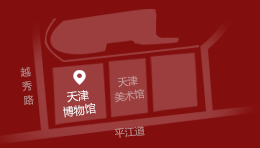明 沈周 虎丘送客图
明成化十六年(1480)
纸本 设色
纵173.1厘米 横64.2厘米
位于苏州城西北郊的虎丘素有“吴中第一名胜”之美誉,山光塔影和典故传说使这里成为文人墨客雅聚吟咏的绝佳场所。明成化十六年(1480),54岁的画家沈周为其同乡,任职工部,在山东主持水利工程的徐源(仲山)于虎丘饯行,他们携酒而来,山林间以诗文唱和,其后沈周便创作了《虎丘送客图》。
《虎丘送客图》轴,纸本设色,纵173.1厘米、横64.2厘米,收藏于天津博物馆。画面描绘了一位文士临流坐于长松之下,停琴观泉的情景。图中远山险峻,树木葱郁,近处古松如盖,泉流湍急,静观此图似可闻流水潺潺,松涛阵阵,文人放逸闲适的生活状态被作者呈现于画面之上。
沈周(1427-1509),字启南,号石田,晚号白石翁,长洲(今江苏苏州)人,明代著名画家。生长于书香门第的沈周没有走一般读书人科举入仕的道路,而是一生隐居乡里,醉心诗文书画之中。其画风老辣苍润,沉着浑厚,间作细笔,谨密中有疏通醇和之趣。与文徵明、唐寅、仇英合称“明四家”。明代中期苏州地区一批画家崛起于画坛,他们继承宋、元以来文人绘画的传统,尤以“元四家”为宗,讲求笔墨情趣与形式美,追求绘画对“士气”和“逸品”的表现。画史中将他们称作“吴门画派”,沈周就是其中的代表性画家。
《虎丘送客图》画面布局疏朗有致,笔墨细腻秀逸,长披麻皴绘山石,笔法苍劲,苍松则以爽健之笔写出。人物虽较小并仅位于画面下方,却以朱色染衣,使其形象立时于画面中突出出来。本图虽为虎丘饯行而画,却并不是对真实场景的纪实性描绘,而是着力表现传统中国文人士大夫对山林隐逸生活的美好向往。沈周将这种潇洒随性的生活态度以逸笔写出,再于画上题写五言长诗一首,更有当时的文士吴宽的题诗,可谓诗、书、画相映,共同构成了这一杰出的作品。
Seeing off a Guest at Huqiu(Tiger Hill)
Shen Zhou(c. 1427-1509)
Ming dynasty, 16th year of Chenghua period(1480)
Hanging scroll, ink and colour on paper
Height 173.1cm, Width 64.2 cm
This work was painted by Shen Zhou at the age of 54, to commemorate his parting with Xu Yuan, a friend from his hometown. The composition makes exceptional use of contrasted sparseness and density, and the brushwork is exquisite, with exceptionally skilful sweeping textured stokes and application of washes. The painting features a self-authored poem by the artist and an inscription by the famous calligrapher of the period, Wu Kuan. The content of both these pieces of writing corresponds with the theme of the painting and also tell us why this painting was made. It is a powerful archetypal work from the mid-Ming Wumen school, illustrating Shen Zhou’s art at its height. At one point this piece was part of Qing Emperor Qianlong’s collection in the Forbidden City.
Shen Zhou had the style name Qi Nan and the personal name Stoney Field and was a native of Changzhou(modern day Suzhou). He was a skilled calligrapher and an accomplished painter whose expansive range led him to create his own style. His finest works were his monochrome landscapes, with their firm and bold use of brush and ink. The detailed brushwork in his landscapes suffused them with a lofty grandeur, while his use of heavy ink and light colour in figure, and bird and flower paintings filled them with charm. Shen Zhou was one of the “Four Masters of the Ming”.







 电话:022-83883000
电话:022-83883000 传真:022-83883088
传真:022-83883088 地址:天津市河西区平江道62号
地址:天津市河西区平江道62号